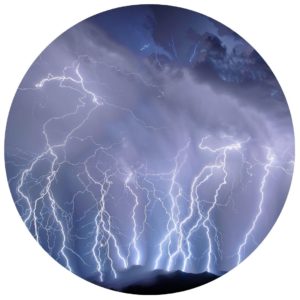The Norse God Thor is especially associated with acreage
The Norse God Thor is especially associated with acreage, fertile harvests and as such, can be considered to be an agricultural deity. Known for his hammer Mjölnir, his appearance and force were associated with thunder, lightning and and in particular oak trees. (Hilda Davidsson, 1975).
Roman historican Publius Cornelius Tacitus wrote in ‘Germania’, that ‘among the gods Mercury is the one they principally worship. They regard it as a religious duty to offer to him, on fixed days, human as well as other sacrificial victims. Hercules and Mars they appease by animal offerings of the permitted kind” and adds that a portion of the Suebi (a Germanic tribe) also venerate “Isis.
In the Völuspa of the Poetic Edda, we learn about the coming death of Thor and, of course, Thor’s role in slaying and killing the serpent Jörmungandr at the event of Ragnarök. The prophecy tells that:
‘Then comes the mighty son of Hlôdyn:
(Odin’s son goes with the monster to fight);
Midgârd’s Veor in his rage will slay the worm.
Nine feet will go Fiörgyn’s son,
bowed by the serpent, who feared no foe.
All men will their homes forsake. (Benjamin Thorpe, 1907).

It is generally believed that the role of fertile lands and plentiful, stable harvests gained a more significant role during the Metal Ages in Europe as Agriculture became the dominant mode of subsistence. This in turn would explain the importance of Thor and other agricultural deities of the Indo-European Pantheon, as the deity itself expressed this inter-dependence on fertile soil, harvest and the production of crops.
During the Bronze and Iron Age, community feasts and the role of celebrating harvests in order to network and trade with other cultures became increasingly complex and widespread (see e.g. Marek Zvelebil, 1991).
Thor, the Celtic Taranis, or the continental Germanic Donar, have been venerated and important to rural farmers and their myths continued and surviving even after Christianization across Europe in celebrations such as spring fires (see the Funkenfeuer-tradition of Southern Germany and Switzerland as an example and in particular German scholar Wilhelm Mannhardt’s works), as well as the last-sheaf customs regarding the harvest season.




